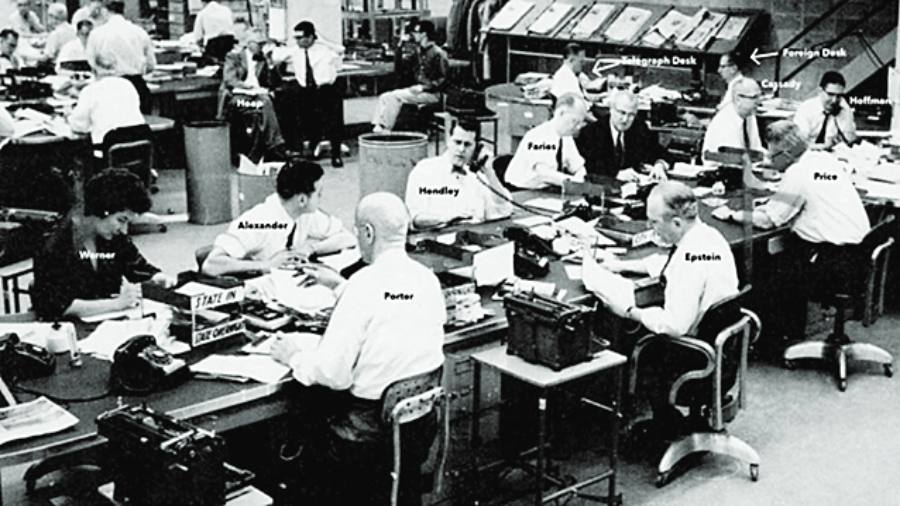Book: Chasing History: A Kid in the Newsroom
Author: Carl Bernstein
Publisher: Henry Holt
Price: $29.99
Carl Bernstein achieved journalistic immortality, if there is such a thing, when he investigated, along with Bob Woodward, the Watergate scandal for The Washington Post. In Chasing History, however, Bernstein is not the seasoned newshound. Here, he looks back fondly on — but also critically at — his years at the Evening Star, ironically the Post’s rival, that helped shape him into the dexterous reporter he was to become.
And it all started with, as is often the case with those who fall in love with the newsroom, the first glimpse of the chaos that the newsroom used to be: “The door by which I had entered was at the end of a dim, quiet corridor…” But another door opened up for Bernstein “another universe” — “People were shouting. Typewriters clattered and chinged. Beneath my feet, I could feel the rumble of the presses. In my whole life I had never heard such glorious chaos...” Several passages like this would appear anachronistic to the young, modern journalist, working from a quiet home on sleek keyboards. Indeed, the architecture of journalism that Bernstein writes about with precision is now a lost world. This — other — newsroom was brought to life by such extinct species as Copy Boys — “stevedores in the process of moving copy downriver”— charging between reporters and desks, bearing rough drafts of freshly-minted news, even as dictationists worked the phones and linotypists laboured a floor below. This was also a world where a deputy-national editor could get belted by an investigative reporter for mauling her copy.
Hearteningly, not everything has changed beyond recognition and Bernstein’s lively pen brings to light these constants. Star, just like every newspaper, old or new, had its share of characters — colleagues — who left their mark on newsrooms. The police reporter, Bernstein writes, looked and sounded like a warthog; the science reporter terrorized dictationists with his lightning-fast commentary; then there is Harrigan’s — this watering hole was to the Star what Chung Wah was once to The Telegraph.
Where Chasing History excels is in its ability to seamlessly fuse the worlds within and outside the newsroom. Bernstein covered swathes of crucial history — JFK’s anointment as president, the botched Bay of Pigs invasion, race riots, the civil rights movement and, of course, the Kennedy assassination — in the course of learning the ropes. He wasn’t a passive learner either. Star’s errors, including its lead story’s indifference to a historic speech by Martin Luther King, are acknowledged.
Star, eventually, was felled by the changing news market, its own fixity — hubris — and mismanagement. But Chasing History is not meant to be a dirge. It is, in fact, a testament to continuity. For it deliberates on vexing questions that continue to bedevil today’s media — dilemmas about reporting on race, religion, inequality as well as the seduction of complicity with the powers that be. Bernstein’s Star shines in its afterlife through these evolving conversations.











